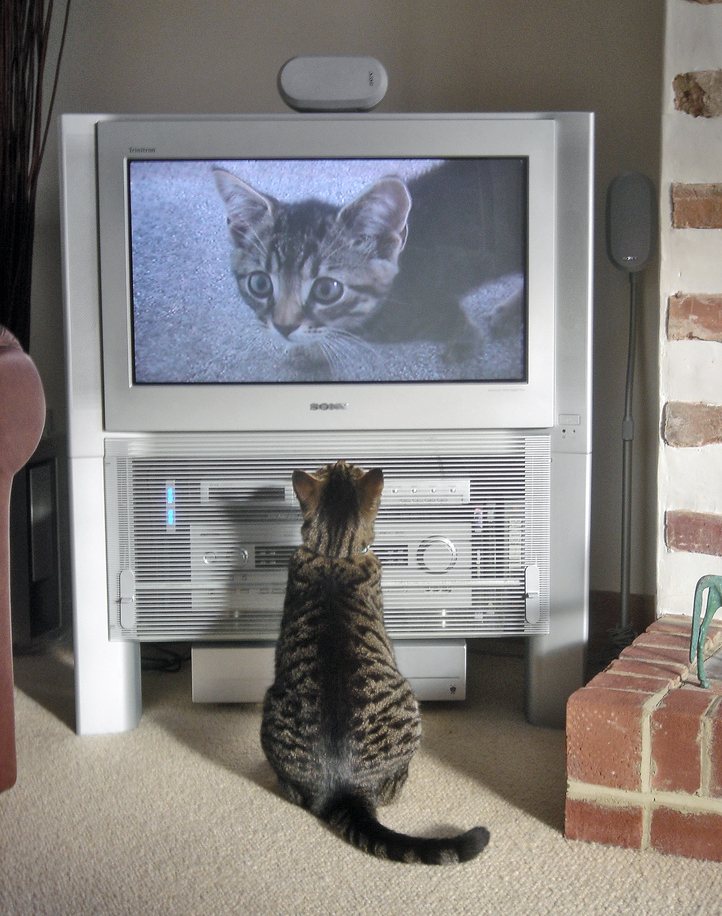|
ETP-1
ETP-1 (or Electronic Test Pattern One) was a test card designed and used by the Independent Broadcasting Authority (IBA). After test transmissions from the IBA's Engineering Regional Operations Centre (ROC) in Croydon from 1978 it was phased in on ITV over a period starting from 1979, replacing, in different ITV regions: Test Card F, Test Card G and full screen height EBU colour bars. After ITV went 24 hours in 1988, the card ceased to be seen on the channel. It was used for both 625-line PAL and 405-line monochrome broadcasts. Throughout the 1980s, it was seen extensively on both Channel 4 and S4C during both their pre-launch tests and during the day, due to their limited broadcast hours early on, and shortly after launch it alternated with in-vision teletext broadcasts. On these channels, it was captioned either IBA:CH4 or IBA:S4C, with lines above and below this indicating the card was being generated by the channel, the absence of these lines meant it was generated at the ... [...More Info...] [...Related Items...] OR: [Wikipedia] [Google] [Baidu] |
Philips PM5544
The Philips circle pattern (also referred to as the Philips pattern or PTV Circle pattern) refers to a family of related electronically generated complex television station colour test cards. The content and layout of the original colour circle pattern was designed by Denmark, Danish engineer (1939–2011) in the Philips TV & Test Equipment laboratory in Amager (moved to Brøndby Municipality in 1989) near Copenhagen under supervision of chief engineer Erik Helmer Nielsen in 1966–67, largely building on their previous work with the monochrome Philips PM5540, PM5540 pattern. The first piece of equipment, the PM5544 colour pattern generator, which generates the pattern, was made by Finn Hendil and his group in 1968–69. The same team would also develop the Spanish TVE test card, TVE colour test card in 1973. Since the widespread introduction of the original PM5544 from the early-1970s, the Philips Pattern has become one of the most commonly used test cards, with only the SMPTE co ... [...More Info...] [...Related Items...] OR: [Wikipedia] [Google] [Baidu] |
Test Card
A test card, also known as a test pattern or start-up/closedown test, is a television test signal, typically broadcast at times when the transmitter is active but no program is being broadcast (often at sign-on and sign-off). Used since the earliest TV broadcasts, test cards were originally physical cards at which a television camera was pointed, allowing for simple adjustments of picture quality. Such cards are still often used for calibration, alignment, and matching of cameras and camcorders. From the 1950s, test card images were built into monoscope tubes which freed up the use of TV cameras which would otherwise have to be rotated to continuously broadcast physical test cards during downtime hours. Electronically generated test patterns, used for calibrating or troubleshooting the downstream signal path, were introduced in the late-1960s, and became commonly used from the 1970s and 80s. These are generated by test signal generators, which do not depend on the correct config ... [...More Info...] [...Related Items...] OR: [Wikipedia] [Google] [Baidu] |
Square Wave (waveform)
A square wave is a non-sinusoidal waveform, non-sinusoidal periodic waveform in which the amplitude alternates at a steady frequency between fixed minimum and maximum values, with the same duration at minimum and maximum. In an ideal square wave, the transitions between minimum and maximum are instantaneous. The square wave is a special case of a pulse wave which allows arbitrary durations at minimum and maximum amplitudes. The ratio of the high period to the total period of a pulse wave is called the duty cycle. A true square wave has a 50% duty cycle (equal high and low periods). Square waves are often encountered in electronics and signal processing, particularly digital electronics and digital signal processing. Its stochastic counterpart is a two-state trajectory. Origin and uses Square waves are universally encountered in digital switching circuits and are naturally generated by binary (two-level) logic devices. They are used as timing references or "clock signa ... [...More Info...] [...Related Items...] OR: [Wikipedia] [Google] [Baidu] |
Display Resolution
The display resolution or display modes of a digital television, computer monitor, or other display device is the number of distinct pixels in each dimension that can be displayed. It can be an ambiguous term especially as the displayed resolution is controlled by different factors in cathode-ray tube (CRT) displays, flat-panel displays (including liquid-crystal displays) and projection displays using fixed picture-element (pixel) arrays. It is usually quoted as ', with the units in pixels: for example, ' means the width is 1024 pixels and the height is 768 pixels. This example would normally be spoken as "ten twenty-four by seven sixty-eight" or "ten twenty-four by seven six eight". One use of the term ''display resolution'' applies to fixed-pixel-array displays such as plasma display panels (PDP), liquid-crystal displays (LCD), Digital Light Processing (DLP) projectors, AMOLED, OLED displays, and similar technologies, and is simply the physical number of columns and rows of pi ... [...More Info...] [...Related Items...] OR: [Wikipedia] [Google] [Baidu] |
Bandwidth (signal Processing)
Bandwidth is the difference between the upper and lower Frequency, frequencies in a continuous Frequency band, band of frequencies. It is typically measured in unit of measurement, unit of hertz (symbol Hz). It may refer more specifically to two subcategories: ''Passband bandwidth'' is the difference between the upper and lower cutoff frequencies of, for example, a band-pass filter, a communication channel, or a signal spectrum. ''Baseband bandwidth'' is equal to the upper cutoff frequency of a low-pass filter or baseband signal, which includes a zero frequency. Bandwidth in hertz is a central concept in many fields, including electronics, information theory, digital communications, radio communications, signal processing, and spectroscopy and is one of the determinants of the capacity of a given communication channel. A key characteristic of bandwidth is that any band of a given width can carry the same amount of information, regardless of where that band is located in the f ... [...More Info...] [...Related Items...] OR: [Wikipedia] [Google] [Baidu] |
Spatial Frequency
In mathematics, physics, and engineering, spatial frequency is a characteristic of any structure that is periodic across position in space. The spatial frequency is a measure of how often sinusoidal components (as determined by the Fourier transform) of the structure repeat per unit of distance. The SI unit of spatial frequency is the reciprocal metre (m−1), (11 pages) although cycle (rotational unit), cycles per (c/m) is also common. In image-processing applications, spatial freque ... [...More Info...] [...Related Items...] OR: [Wikipedia] [Google] [Baidu] |
YouTube
YouTube is an American social media and online video sharing platform owned by Google. YouTube was founded on February 14, 2005, by Steve Chen, Chad Hurley, and Jawed Karim who were three former employees of PayPal. Headquartered in San Bruno, California, it is the second-most-visited website in the world, after Google Search. In January 2024, YouTube had more than 2.7billion monthly active users, who collectively watched more than one billion hours of videos every day. , videos were being uploaded to the platform at a rate of more than 500 hours of content per minute, and , there were approximately 14.8billion videos in total. On November 13, 2006, YouTube was purchased by Google for $1.65 billion (equivalent to $ billion in ). Google expanded YouTube's business model of generating revenue from advertisements alone, to offering paid content such as movies and exclusive content produced by and for YouTube. It also offers YouTube Premium, a paid subs ... [...More Info...] [...Related Items...] OR: [Wikipedia] [Google] [Baidu] |
Integral Linearity
A measurement system consists of a sensor, to input the physical parameter that is of interest, and an output to a medium that is suitable for reading by the system that needs to know the value of the parameter. (This could be a device to convert the temperature of the surrounding air or water into the visually readable height of a column of mercury in a small tube, for example; but the conversion could also be made to an electronic encoding of the parameter, for reading by a computer system.) The integral linearity is then a measure of the fidelity of the conversion that is performed by the measuring system. It is the relation of the output to the input over a range expressed as a percentage of the full-scale measurements. Integral linearity is a measure of the device's deviation from ideal linear behaviour. The most common denotation of integral linearity is independent linearity. In the context of a digital-to-analog converter (DAC) or an analog-to-digital converter ... [...More Info...] [...Related Items...] OR: [Wikipedia] [Google] [Baidu] |
Greyscale
In digital photography, computer-generated imagery, and colorimetry, a greyscale (more common in Commonwealth English) or grayscale (more common in American English) image is one in which the value of each pixel is a single sample representing only an ''amount'' of light; that is, it carries only intensity information. Grayscale images, are black-and-white or gray monochrome, and composed exclusively of shades of gray. The contrast ranges from black at the weakest intensity to white at the strongest. Grayscale images are distinct from one-bit bi-tonal black-and-white images, which, in the context of computer imaging, are images with only two colors: black and white (also called ''bilevel'' or '' binary images''). Grayscale images have many shades of gray in between. Grayscale images can be the result of measuring the intensity of light at each pixel according to a particular weighted combination of frequencies (or wavelengths), and in such cases they are monochroma ... [...More Info...] [...Related Items...] OR: [Wikipedia] [Google] [Baidu] |
Colorfulness
Colorfulness, chroma and saturation are attributes of perceived color relating to chromatic intensity. As defined formally by the International Commission on Illumination (CIE) they respectively describe three different aspects of chromatic intensity, but the terms are often used loosely and interchangeably in contexts where these aspects are not clearly distinguished. The precise meanings of the terms vary by what other functions they are dependent on. * Colorfulness is the "attribute of a visual perception according to which the perceived color of an area appears to be more or less chromatic (Any color that is absent of white, grey, or black)"., page 87. The colorfulness evoked by an object depends not only on its spectral reflectance but also on the strength of the illumination, and increases with the latter unless the brightness is very high (Hunt effect (color), Hunt effect). * Chroma is the "colorfulness of an area judged as a proportion of the brightness of a similarl ... [...More Info...] [...Related Items...] OR: [Wikipedia] [Google] [Baidu] |






